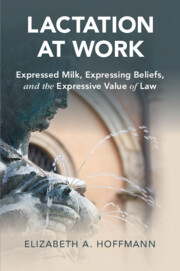Book contents
- Lactation at Work
- Cambridge Studies in Law and Society
- Lactation at Work
- Copyright page
- Dedication
- Contents
- Tables
- Acknowledgments
- Chapter One Introduction
- Chapter Two Lactation Law as Public Policy
- Chapter Three Expressed Frustration
- Chapter Four Milk and Management
- Chapter Five Allies Already
- Chapter Six Moralizing the Law
- Chapter Seven Conclusion
- Book part
- References
- Index
- Cambridge Studies in Law and Society
- References
References
Published online by Cambridge University Press: 20 July 2021
- Lactation at Work
- Cambridge Studies in Law and Society
- Lactation at Work
- Copyright page
- Dedication
- Contents
- Tables
- Acknowledgments
- Chapter One Introduction
- Chapter Two Lactation Law as Public Policy
- Chapter Three Expressed Frustration
- Chapter Four Milk and Management
- Chapter Five Allies Already
- Chapter Six Moralizing the Law
- Chapter Seven Conclusion
- Book part
- References
- Index
- Cambridge Studies in Law and Society
- References
Summary

- Type
- Chapter
- Information
- Lactation at WorkExpressed Milk, Expressing Beliefs, and the Expressive Value of Law, pp. 211 - 234Publisher: Cambridge University PressPrint publication year: 2021

